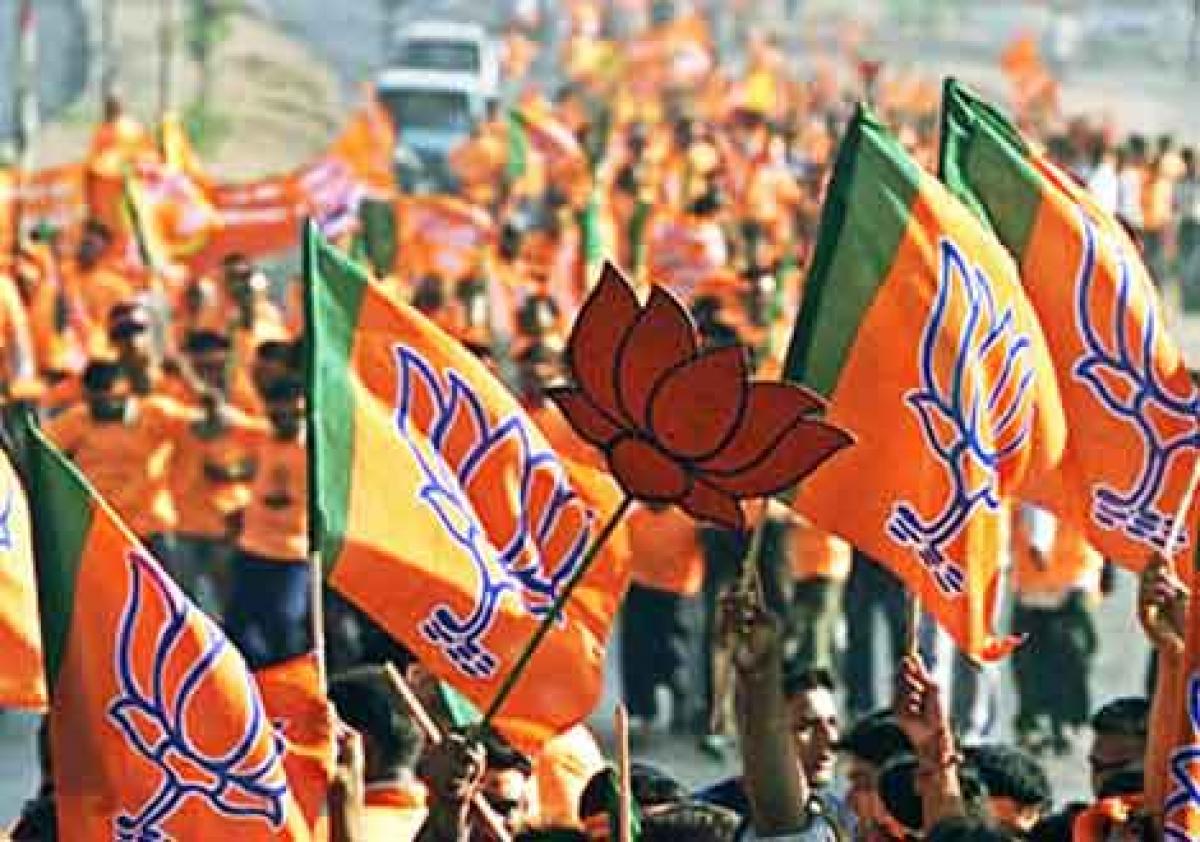Live
- Geeta Jayanti Celebrations Organized at Maldakal Thimmappa Swamy Temple
- Indiramma Housing Scheme Survey Reviewed by District Collector
- Government Committed to Resolving ASHA Workers' Issues: Minister Damodar Raja Narasimha
- 'Refrain from interfering in municipal polls': Union Minister Ravneet Bittu tells Punjab officials
- SC grants anticipatory bail to accused in POCSO case
- Rising Rajasthan Summit to return in 2026, says CM Sharma
- Kerala HC issues contempt notice to official over elephant regulation violations
- 3rd ODI: Have to learn to take things till the end, says Harmanpreet after India's 3-0 defeat to Australia
- Brook is probably the best Test batter in the world right now, says Ponting
- Congress to fight alone in Delhi, Alok Sharma labels AAP a 'distraction'
Just In
BJP lead in Assam has nothing to do with record voter turnout


Higher-than-expected voter turnout of a record-breaking 84.7 percent in Assam has been making headlines since the assembly polls ended on April 11, 2016.
Higher-than-expected voter turnout of a record-breaking 84.7 percent in Assam has been making headlines since the assembly polls ended on April 11, 2016.
Higher turnout may indicate a desire for change and could imply the possibility of a Bharatiya Janata Party (BJP) victory in Assam, according to some reports.
We, therefore, set out to answer a key question: Does higher turnout translate into an anti-incumbency wave?
While vote share of a political party in any assembly election is the number of votes it secured as a percentage of total votes polled in the state, the ‘contested vote share’ is the number of votes it secured as a percentage of total votes polled in the seats it has contested, and not in the entire state.
For example, consider a state that has election to 20 assembly seats, and in all 400 votes were polled in it. If a party secures 100 votes in a that election, its vote share is 25 percent. But if it contested not all 20 but only 10 seats, in which total votes polled were 200, the contested vote share is 50 percent.
We analysed the contested vote share of BJP and Congress in the last two elections-2011 state assembly and the 2014 Lok Sabha elections - and compared it to the voter turnout in 2014.
Voter turnout has been on the rise since 2011 (75.92 percent in 2011 to 80.12 percent in 2014 to 84.73 percent in 2016) and the BJP swept the state in the 2014 general elections.
One parliamentary constituency is made up of about five to seven assembly constituencies. To make the 2011 assembly and 2014 Lok Sabha results exactly comparable, we used the ‘assembly constituency wise’ result of the parliamentary election of 2014.
By sorting the assembly constituencies in 2014 according to the voter turnout in that year, we studied the 15 with the highest turnout and 15 with the lowest, and analysed the performance of the BJP and the Congress in these extreme constituencies in the two elections.
Our findings were as follows:
A simple assessment of the vote share tells us that BJP’s performance in areas with lower turnout is better than in areas with higher turnout (48.3 percent versus 17.5 percent, respectively).
The next was to try and understand if the pattern was a manifestation of where the BJP was strong and where it wasn’t.
So, we looked at the districts these assembly constituenciesbelong to, and how the party performed there in 2011.
We found that the bottom 15 constituencies were in Barak Valley and Upper Assam while the top 15 were in lower and central Assam, which are primarily Muslim-dominated areas.
What we see is Congress’s falling momentum across the state, and a repeat of the earlier trend where BJP performed better (16 percent vs 5.9 percent) in the lower turnout group.
To conclude, an increase in turnout did not have a corresponding impact on the BJP’s vote share. In fact, its growing presence in Assam can be attributed to its strengthening grip in Barak Valley and Upper Assam, irrespective of lower voter turnout. So, there is an anti-incumbency factor in favour of BJP but it is not related to the higher turnout.
Will voters favour development and Prime Minister Narendra Modi-led BJP? Will votes be split between Congress and the United Democratic Front? Will a higher turnout in Muslim-dominant areas work for or against the BJP? We will know the answers on May 19.
By Swapnil Bhandari & Rithika Kumar
(In arrangement with IndiaSpend.org, a data-driven, non-profit, public interest journalism platform. Swapnil Bhandari & Rithika Kumar are Associate and Senior Analyst at Mumbai based think-tank IDFC Institute. The views expressed are those of IndiaSpend. The authors can be contacted at [email protected])

© 2024 Hyderabad Media House Limited/The Hans India. All rights reserved. Powered by hocalwire.com






